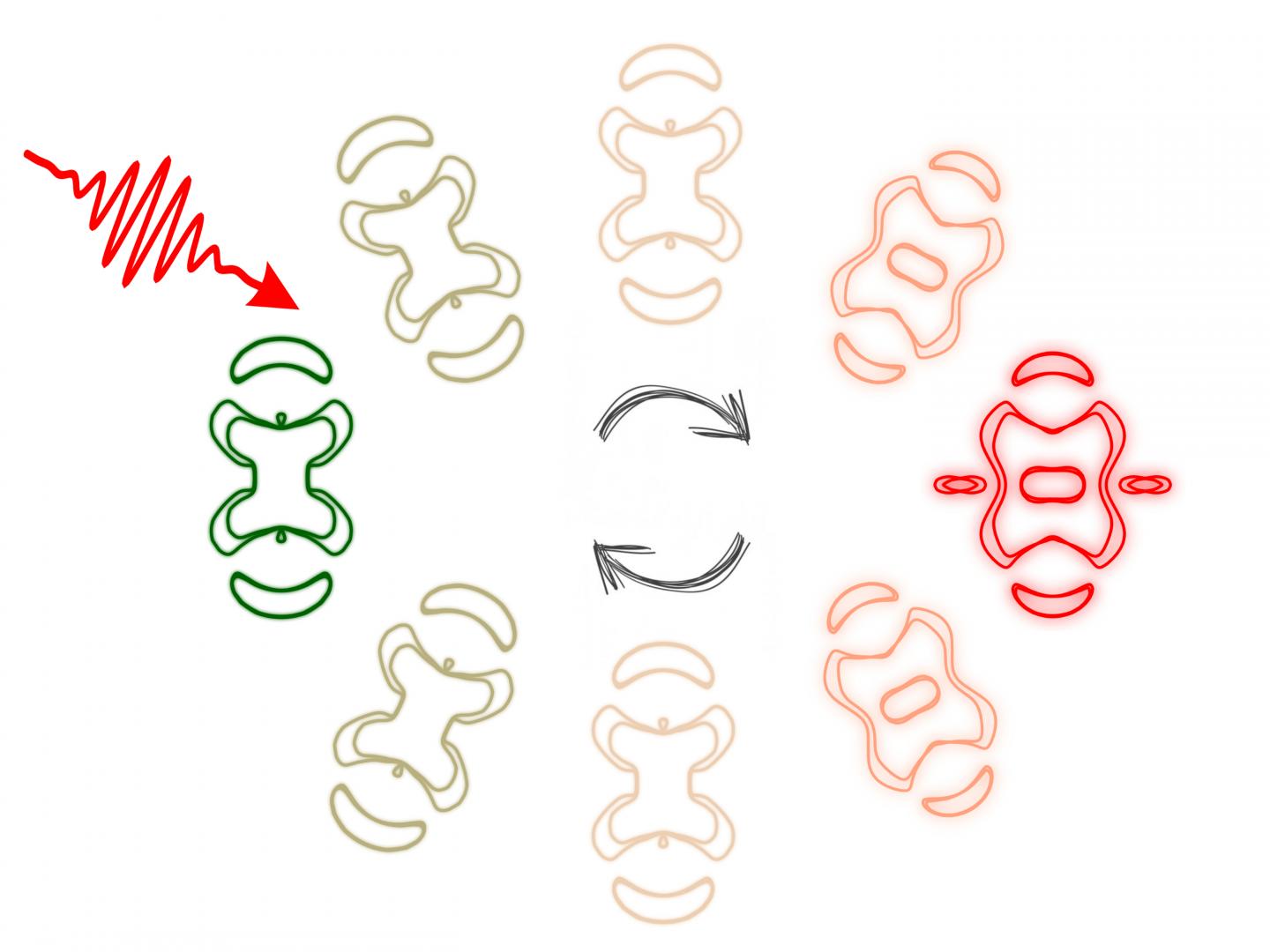
Credit: © Beaulieu
Making the speed of electronic technology as fast as possible is a central aim of contemporary materials research. The key components of fast computing technologies are transistors: switching devices that turn electrical currents on and off very quickly as basic steps of logic operations. In order to improve our knowledge about ideal transistor materials, physicists are constantly trying to determine new methods to accomplish such extremely fast switches. Researchers from the Fritz Haber Institute of the Max Planck Society in Berlin and the Max Planck Institute for the Structure and Dynamics of Matter in Hamburg have now figured out that a novel type of ultrafast switch can be accomplished with light.
The physicists involved in the project are studying how to best get materials to change their properties – to make magnetic metals non-magnetic, for example, or to change the electric conductivity of a crystal. A material’s electrical properties are strongly related to the arrangement of the electrons in the crystal. Controlling the electrons’ arrangement has been a key topic for decades. Most control methods, however, are fairly slow. “We knew that external influences like temperature or pressure variations work”, says Dr. Ralph Ernstorfer, Group Leader at the Department of Physical Chemistry at the Fritz Haber Institute, “but that takes time, at least a few seconds.” Those who regularly use a smart phone or computer know that a few seconds can feel like eternity. So Dr. Ernstorfer’s group explored how to switch material properties much faster by means of light.
Using brand new equipment at the Fritz Haber Institute, the researchers have massively cut down the switching time to only 100 femtoseconds – 0,000 000 000 000 1 of a second – by shooting ultrashort optical laser pulses at their chosen material, a semi-metallic crystal composed of tungsten and tellurium atoms. Shining light on the crystal encourages it to re-organize its internal electronic structure, which also changes the conductivity of the crystal. In addition, the scientists were able to observe exactly how its electronic structure changed. “We used a new instrument to take pictures of the transition every step of the way”, explains Dr. Samuel Beaulieu, who worked as a postdoctoral fellow with Ralph Ernstorfer at the Fritz-Haber-Institut (2018-2020) and who is now a permanent researcher at the Centre Lasers Intenses et Applications (CELIA) at CNRS-Bordeaux University. “This is amazing progress – we used to only know what the electronic structure of the material looked like after, but never during the transition,” he adds. Moreover, state-of-the-art modeling of this new process by Dr. Nicolas Tancogne-Dejean, Dr. Michael Sentef, and Prof. Dr. Angel Rubio from Max the Planck Institute for the Structure and Dynamics of Matter has revealed the origin of this novel type of ultrafast electronic transition. The laser pulse impinging on the materials changes the way electrons interact with each other. That is the driving force of this exotic transition, known as a Lifshitz transition.
This method is bound to generate a great deal of knowledge about possible future transistor materials. The fact alone that light can drive ultrafast electronic transitions is a first step towards even quicker and more efficient technology.
###
Media Contact
Agatha Frischmuth
[email protected]





